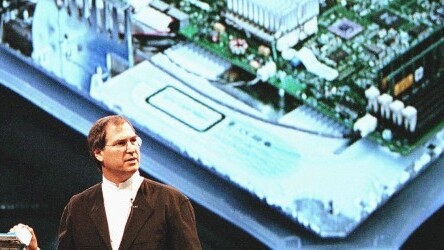
Apple is ‘exploring’ moving away from Intel processors for its Macs, according to a report from Bloomberg. This isn’t the first rumor that we’ve heard of a potential transition in recent months.
The report says that Apple engineers have ‘grown confident’ that the designs it is producing for iPhones and iPads will be powerful enough to run Mac desktops and laptops. Apple is said to be committed to Intel for now, and for the next few years, but that a switch to its own designs is ‘inevitable’. Eventually, the processors would begin to use a common design of chips between desktop and mobile devices.
Among the reasons for Apple to move away from Intel is the fear that it might not be able to keep up with the lower power consumption needs of mobile devices. Apple has apparently ‘grown concerned’ with Intel’s chips like those in the MacBook Air continuing to be able to deliver more power efficient performance as they get thinner, with smaller batteries.
Apple recently stated that its processor plans were ‘ambitious’, and placed formerly retired SVP Bob Mansfield in charge of a Technologies group, which will be exploring and expanding on its A-series designs found in iPhones and iPads. It’s not too much of a stretch to think that Mansfield’s group would be in charge bringing custom Apple-designed processors to Macs. Mansfield is set to be at Apple for two years, bringing up some interesting thoughts about how long this transition might take.
A Businessweek profile of Apple from back in October also indicated that the company has considered moving away from Intel chips in the Mac:
Apple has also deliberated over moving away from Intel chips in the Macintosh, say two people familiar with these discussions. Such a shift would be difficult and isn’t imminent, though it would allow Apple to further distinguish its laptops and desktops from competitors that run Intel’s (INTC) chips and Microsoft’s Windows software.
The concerns came to a head in late 2011. Apple was working on thinner versions of its MacBook line, featuring its power- hungry high-resolution retina display, and Intel had failed to convince Apple executives it was serious about focusing on lower-power chips. Apple executives, including Mansfield, met repeatedly with their Intel counterparts to share their questions, and to tell the chipmaker it was examining ways to use its own chips in the Mac line, one of the people said.
Apple has been using Intel processors since it swapped from IBM-built PowerPC chips in its Macintosh back in 2005. That transition was done in secret on the impetus of a single engineer — John Kullmann — who worked on the project in secret for years before the change was made publicly.
Apple has used the ARM-based A-series processors in its portable devices because of their power-friendly profiles. ARM6 was a joint effort started by Apple for the Newton project in conjunction with two other companies.
Since then, Apple has bought two processor companies including Intrinsity and PA Semi to boost its chip team, which is now a force to be reckoned with. Transitioning Macs over to custom-built processors that allow them to eek out better performance seems like it could be a reasonable course of action.
Apple’s current A-series processors are manufactured by Samsung, a company that it has been embroiled in legal action over its phones and tablets for years.
Image Credit: JOHN G. MABANGLO/AFP/Getty Images
Get the TNW newsletter
Get the most important tech news in your inbox each week.




